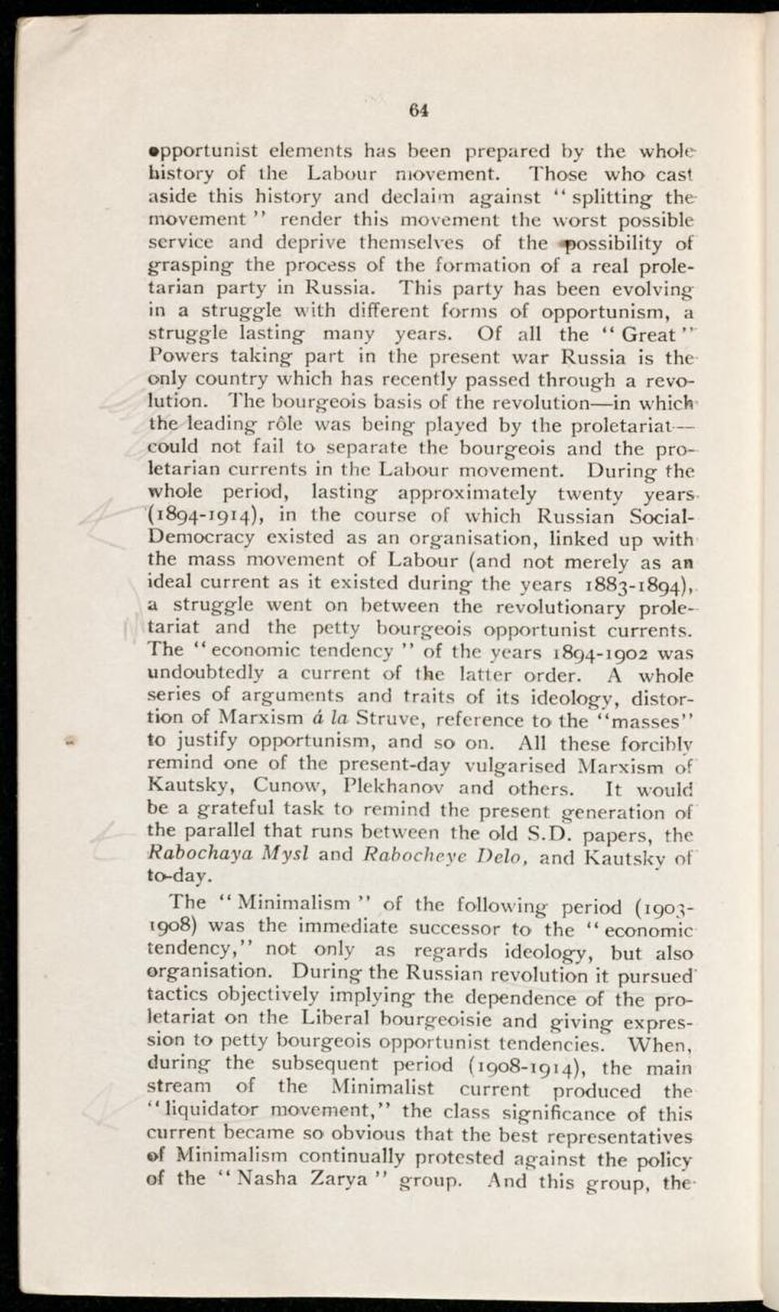64
opportunist elements has been prepared by the whole history of the Labour movement. Those who cast aside this history and declaim against "splitting the movement" render this movement the worst possible service and deprive themselves of the possibility of grasping the process of the formation of a real proletarian party in Russia. This party has been evolving in a struggle with different forms of opportunism, a struggle lasting many years. Of all the "Great" Powers taking part in the present war Russia is the only country which has recently passed through a revolution. The bourgeois basis of the revolution—in which the leading rôle was being played by the proletariat—could not fail to separate the bourgeois and the proletarian currents in the Labour movement. During the whole period, lasting approximately twenty years (1894–1914), in the course of which Russian Social-Democracy existed as an organisation, linked up with the mass movement of Labour (and not merely as an ideal current as it existed during the years 1883–1894), a struggle went on between the revolutionary proletariat and the petty bourgeois opportunist currents. The "economic tendency" of the years 1894–1902 was undoubtedly a current of the latter order. A whole series of arguments and traits of its ideology, distortion of Marxism á la Struve, reference to the "masses" to justify opportunism, and so on. All these forcibly remind one of the present-day vulgarised Marxism of Kautsky, Cunow, Plekhanov and others. It would be a grateful task to remind the present generation of the parallel that runs between the old S.D. papers, the Rabochaya Mysl and Rabocheye Delo, and Kautsky of to-day.
The "Minimalism" of the following period (1903–1908) was the immediate successor to the "economic tendency," not only as regards ideology, but also organisation. During the Russian revolution it pursued tactics objectively implying the dependence of the proletariat on the Liberal bourgeoisie and giving expression to petty bourgeois opportunist tendencies. When, during the subsequent period (1908–1914), the main stream of the Minimalist current produced the "liquidator movement," the class significance of this current became so obvious that the best representatives of Minimalism continually protested against the policy of the "Nasha Zarya" group. And this group, the
